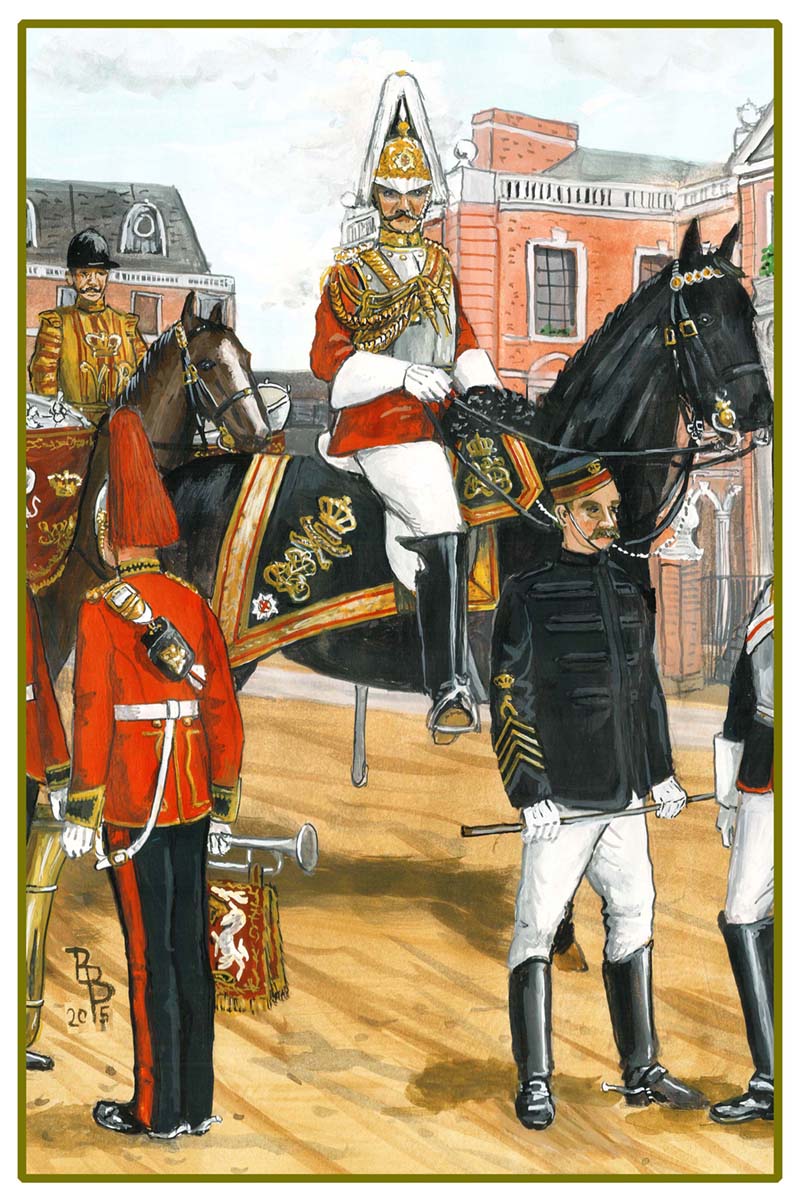Queen Victoria's Armed Forces
1881-1902
From the forthcoming book
THE HOUSEHOLD CAVALRY
UNIFORMS, ARMS & EQUIPMENT
For a general synopsis on the general development of cavalry and uniforms in the late nineteenth century, please read the introduction to Dragoon Guards and Dragoons
THE HOUSEHOLD CAVALRY
1881-1902
INTRODUCTION
When Charles II returned to England in 1660, he brought with him three troops of Horse Guards who, upon his succession came onto the English establishment. They thus became the senior regiment of the army. With the addition of three troops of Horse Grenadiers they fought in the Low Countries and Ireland in the latter part of the century. They fought at Dettingen (1743) and Fontenoy in 1745 during the War of Austrian Succession. In 1788 they were divided into the 1st and 2nd Regiments of Life Guards. They fought in the Peninsular War and at Waterloo in 1815 took part in the Household Brigade’s charge of the French heavy cavalry. They did not take part in any overseas actions again until 1881 in the Egyptian campaign. In 1877, they were styled 1st and 2nd Life Guards.
The Royal Horse Guards was a Parliamentary heavy cavalry regiment which was briefly disbanded after the Civil War. In 1661 they were re-raised as a regiment on the English establishment being styled “The Oxford Blues” after their blue coats. They were the second senior regiment of the Army. They fought in most of the same wars as their brother Horse Guards during the eighteenth century with the addition of Warburg during the Seven Years War. In 1750 they were styled “Royal Horse Guards Blue”. In 1813 they officially became part of the Household Cavalry (especially since they were George III’s favourite regiment). After Waterloo they remained at home until the Egyptian War of 1882. In 1877 they received the title Royal Horse Guards (The Blues).


